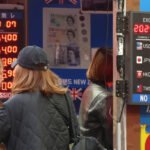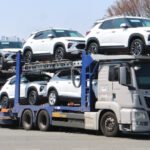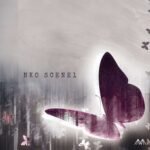A 1,500-ton landing ship (from the top), a 3,400-ton frigate and a 2,200-ton deepwater guard ship built by HD Hyundai Heavy
South Korea’s two warship builders are striving to win a A$11 billion (US$7.3 billion) deal from Australia to build 11 advanced frigates – a competition involving three other strong contenders from Japan, Germany and Spain.
The Australian government recently gave five shipbuilders three weeks to outline their opening pitch for the Navy’s new $11 billion general-purpose frigate project to replace its aging Anzac-class warships.
Five shipbuilders vying for the project are Korea’s two leading warship builders, HD Hyundai Heavy Industries Co. (HHI) and Hanwha Ocean Co., Japan’s Mitsubishi Heavy Industries (MHI), Span’s Navantia and Germany’s KMS.
The five were asked to provide details of how soon they could build the new warships, where they would build them and what they would cost.
The government has vowed to pick the winning design next year, start construction in 2026, receive the first boat by 2029 and have it in service in 2030.
The tender request covers just the first three frigates, which will be built at the bidder’s dockyards for delivery by 2030. A separate request covering how the companies plan to transfer technology to Australia and grow a supply chain to build the remaining ships in Perth will be released later, according to the Australian government.
JAPAN’S MITSUBISHI LIKELY HAS THE UPPER HAND
The project is important to all participants as a winning bid could positively affect their next order in line from Canada and Poland, analysts said.
Industry officials said Japan’s Mitsubishi Heavy Industries has the upper hand versus its rivals in the bidding.
MHI is said to be offering its top-end Mogami-class frigate to Australia for a joint development program.
The 5,500-ton Mogami-class frigates, which feature stealth capabilities, is operated by Japan’s Maritime Self-Defense Force and falls within the guidelines of what is being sought by Canberra, industry watchers said.
The Mogami warship is also compatible with the US weapons system owned by the Australian Navy, they said.
Japan maintains a close cooperative relationship with AUKUS, a defense and security consultative body in which Australia, the UK and the US participate.
Japan is expected to bid for the project by forming a “J Defense Industry One Team,” in which Mitsubishi, if it wins the deal, would share construction of frigates with Mitsui Engineering & Shipbuilding (Mitsui E&S).
Hanwha Ocean’s daegu-class friagate
COST-EFFECTIVE
Analysts said Korean shipbuilders’ strengths lie in building warships at relatively low costs compared to their competitors.
With its flagship 3,600-ton class frigates, HD Hyundai Heavy has been exporting its warships globally, including the Philippines.
Formerly Hyundai Heavy Industries Co., HD Hyundai Heavy is a unit of HD Korea Shipbuilding & Offshore Engineering Co.
HD KSOE, the intermediate holding company of HD Hyundai Co., a shipbuilding, oil refining and machinery conglomerate, has three shipbuilding affiliates under its wing – HD Hyundai Heavy, Hyundai Mipo Dockyard Co. and Hyundai Samho Heavy Industries Co.
Hanwha Ocean, formerly Daewoo Shipbuilding & Marine Engineering Co. (DSME), is one of the world’s major container shipbuilders. Hanwha is the only Korean company that has built submarines for the country’s Navy since 1987.
HD Hyundai Heavy’s chungnam-class frigate
Hanwha is also seeking to acquire Australian shipbuilder Austal to gain a footing in the country’s shipbuilding industry.
HYUNDAI, HANWHA IN LEGAL DISPUTE
The two Korean shipbuilders, however, are involved in a legal dispute over an alleged confidential business secret leak, which could hurt their competitiveness in bidding for the Australian project.
Korea’s Defense Ministry and the Defense Acquisition Program Administration (DAPA) reportedly want the two companies to team up as the “K Defense Industry One Team.”
“It’s no easy job for one shipbuilder to build all the frigates for Australia,” said an industry official.
By Hyung-Kyu Kim
khk@hankyung.com
In-Soo Nam edited this article.















